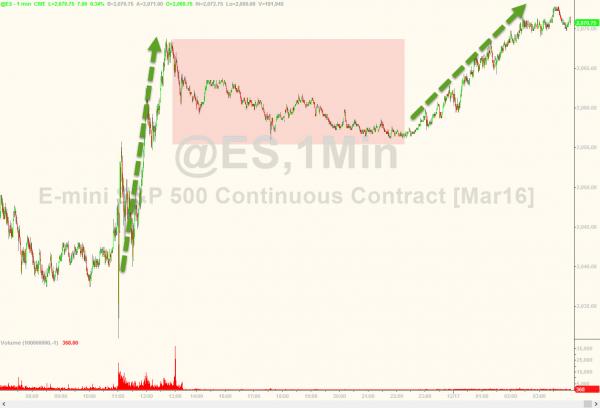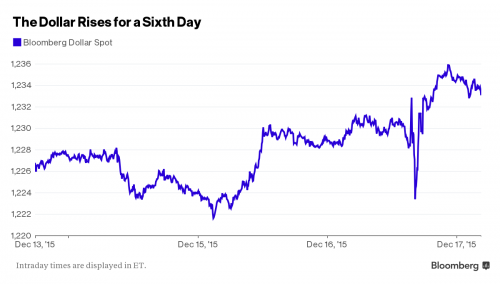Heading into the Fed’s first “dovish” rate hike in nearly a decade, the consensus was two-fold: as a result of relentless telegraphing of the Fed’s intentions, the hike is priced in, and it will be a “dovish” hike, with the Fed lowering its forecast for the number of hikes over the next year. Consensus was once again wrong on both accounts: first the rate hike was far more hawkish than most had expected (see previous post), and – judging by the surge in Asian, European stocks and US equity futures – the “market” simply is enamored with such hawkish hikes which will soon soak up trillions in liquidity from the financial system.

Whatever the reason, global stocks surged on Thursday as investors around the world reacted positively to the Federal Reserve’s decision to raise interest rates and the confidence in the U.S. economy that underpinned the move. European stocks moved higher in early trade, following sharp gains across Asian markets and a higher close on Wall Street in response to the widely expected move by the Fed to end a seven-year experiment with near-zero interest rates.
This is where we stand as of this moment::
“What we see today is basically a sigh of relief,” said Johan Javeus, chief strategist at SEB Group quoted by the WSJ “Equity markets are taking comfort in the fact that this is not the path of a rapid hiking cycle.”
“The messaging around the decision is about as positive as one could expect for investors: a positive economic assessment paired with fairly dovish central bank guidance,” said Eric Lascelles, chief economist at RBC Global Asset Management, in a note.

The U.S. dollar dropped when the Fed started tightening policy in 1994, 1999 & 2004. Some strategists believe this time will be different. The reason can be found in the Fed’s projections for where rates will be in the future. As in September, four hikes are penned for 2016. That’s two more than investors are pricing in, according to Fed fund futures. The thinking is: As the market catches up with the Fed, the dollar will rise. A Bloomberg gauge which tracks the greenback against 10 leading global currencies is gaining for a sixth day, the longest stretch in almost two months. The index has risen 9 percent in 2016, its third year of gains.
A closer look at Asian markets, shows stocks tracked the firm gains seen in US equities with the Nikkei 225 (+1.6%) outperforming as gains were further stoked by a weaker JPY relative to the USD, while the ASX 200 (+1.5%) was led by Utilities following reports that AGL Energy gave a 5 %yr contract to WorleyParsons. Chinese bourses completed the positive regional tone triggered by the Fed rate decision (Shanghai Composite: 1.8%). 10yr JGBs traded flat after paring earlier gains following the weaker than prior 20yr JGB auction.
Top Asian News
In a similar fashion to Asia, European focus has been firmly on the fallout of the Fed rate decision, with participants processing the rate lift off and its wider consequences. European equities (Euro Stoxx: 2.5%) took the lead from their US and Asia-Pacific counterparts to trade firmly in the green, benefiting from the FOMC assumption that the US economy is strong enough to handle higher interest rates. The financial sector leads the way higher, with the 25bps hike inspiring the sector, while defensive sectors such as also healthcare are also among the best performers. Gains have been capped by energy names, the laggard on a sector breakdown, with the industry weighed on by softness in the energy complex.













Leave A Comment